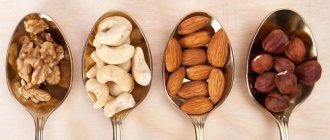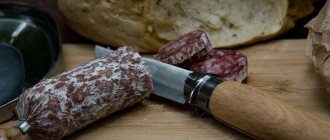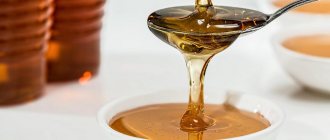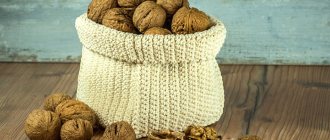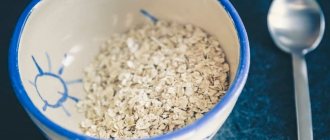Faceted glass capacity
Before we begin to describe the capacity of a faceted glass, we need to define what a faceted glass is. What it is? A standard faceted glass is a container 10.5 cm high. The diameter of the bottom of the faceted glass is approximately 5.5 cm, the top edge is 7.3 cm. The height of the top edge (edge) or rim is 1.4 cm. This is what a simple faceted glass looks like . The container is not even, with edges across the entire glass 1.6-2 cm wide, which is why the container got its name.
The measure of a glass with edges is 200 ml to the top edge. If you count with the edge, then 250 ml. On the market you can also find faceted containers with a volume of 50, 75, 150 ml, but it is the 200 ml glass without or with an edge that is the standard. It is in such containers that the weight of the components of different recipes is indicated.
Glass measure with edges - 200 ml to the top edge, with edge - 250 ml
Important!
In the case where a faceted glass has no top edge at all, its capacity up to the top is exactly 200 ml (if we talk about standard sizes).
If the glass is not the typical shape, has defects, or simply looks different and you have doubts about its capacity, you can check it.
- First you need to put an empty glass on the scale, the volume of which needs to be checked. You can write down the resulting number so as not to forget.
- After the first measurement, you need to fill the glass with water (if there is a rim, then water is poured before it) and weigh it again.
- If the glass has a rim, then the third weighing is carried out by pouring water to the very top.
Now the weight of water is calculated by subtracting the weight of the empty glass from the weight of the container with water. This will be the mass of water in ml that fits in this glass. And the obtained values should be written down so as not to forget.
Features of measuring weight with a glass
Also check out these articles
- The best varieties of white grapes
- Canned Peaches
- Quail breeding as a business
- Bees of Karnika
The measure of a glass may not correspond to the mass of a liquid or bulk product, because these are different definitions. Considering the density of the ingredient, its features, the weight will differ. For example, butter and liquid honey weigh differently due to different densities - this is important to consider! In order for the mass to be always accurate when measuring, it is worth knowing certain subtleties.
- The exact weight of water is obtained only if it is poured to the top of the container.
- Bulk ingredients cannot be compacted by hand; they must be free in the glass. Perhaps when adding flour it is worth checking to see if any voids have formed. To do this, simply stir the flour into the container with a spoon.
- To prevent viscous products from forming voids when measuring them, it is worth putting them on a spoon, and not just pouring them from the main container.
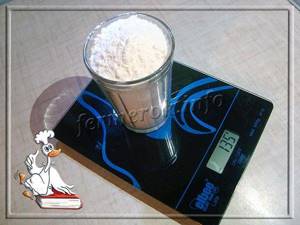
When pouring flour, it is worth checking whether voids have formed
The weight of a product is affected by many indicators, including humidity and density. Below we discuss in detail how many grams are in a faceted glass of various berries, cereals, nuts, liquids, etc.
Important!
A cut glass is always made of durable and thick glass. Such a reliable vessel, even when hitting the floor, does not always crack. This is one of the reasons for its popularity to this day.
general information
Almonds are the fruit of the almond tree, a close relative of the plum. Previously, this plant grew in Asian and Mediterranean countries, today it is cultivated all over the world. Thanks to its excellent taste and unique combination of useful and nutritious substances, almonds in ancient times were considered the nut of gods and kings. Oil based on it is still very expensive today.
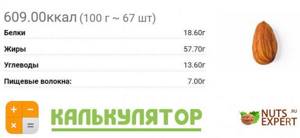
Kernels of sweet varieties are eaten whole (fresh, fried or salted), as well as in ground and processed form (flour, sweets). In cooking, the fruit is added to various dishes - soups, side dishes, meat, baked goods. Many alcohol-containing drinks insist on it.
The fruits contain not only vitamins and minerals, but also proteins, carbohydrates, fatty acids, and fiber. Therefore, they are very beneficial for human health. Due to its high nutritional value, drupes are included in balanced diets.
Nutritionists recommend eating soaked almonds rather than dry ones. This is due to the fact that drupes are poorly digested in the human body due to a special enzyme in its husk. Soaking the kernel in water helps eliminate toxic inhibitors, improving digestion. The concentration of phytic acid, which interferes with the absorption of vital microelements, also decreases. This allows you to use the drupe with maximum benefit for the body.
Bulk solids measurement
Bulk products include dry products that pour out uniformly from the packaging. These are, first of all, various porridges and confectionery ingredients. They have different weights, although some ingredients may have similar meanings. Below is a table of the weight of bulk products up to the edge and with the edge of the faceted glass.
| Product | Weight to rim (g) | Weight with rim (to top, in g) |
| Wheat flour | 130 | 160 |
| Granulated sugar | 160 | 200 |
| Powdered sugar | 140 | 180 |
| Potato starch | 150 | 180 |
| Oatmeal | 80 | 100 |
| Semolina | 160 | 200 |
| Millet | 175 | 220 |
| Lentils | 170 | 210 |
| Buckwheat | 165 | 210 |
| Rice | 185 | 230 |
| Pearl barley | 180 | 230 |
| Barley grits | 145 | 180 |
| Sago | 150 | 180 |
| Salt | 255 | 320 |
| Breadcrumbs | 110 | 130 |
| Lemon acid | 250 | 300 |
| Powdered milk | 100 | 120 |
| Poppy | 120 | 155 |
| Cocoa powder | 130 | 150 |
Taking these indicators into account, you can easily calculate the mass of any bulk components of a dish in glasses, without constantly using scales.
Important!
When calculating the weight of various products, only a dry faceted glass is taken. If it is wet, the weight will not be accurate.
How many grams are in a tablespoon of food (table):
This table contains a list of products, which are measured in grams. Moreover, you need to take into account that some products can be poured into a heaped or unheaped tablespoon. If you want to get acquainted with the measure in milliliters, then read the entry: How many ml. in a tablespoon and a teaspoon.
Another important point! The capacity of tablespoons may vary. This can be influenced by two things: the depth of the cup itself (scoop) and the design of the spoon. For example, a “table spoon” is slightly smaller than a menu spoon in both the length and depth of the cup. In this table, the weight of the ingredients was measured with a tablespoon measuring 21.3 cm in length. Based on the differences in models, the discrepancy may be approximately 3 grams.
A classic menu spoon holds 18 grams of water, a regular one, and a table spoon - 15 grams, although both are positioned as “table spoons”. In Russia, “tablespoons” are more often used.
| Product name | Without slide in grams | With a slide in grams |
| How many grams of water in a tablespoon | 18 | — |
| How many grams of sugar in a tablespoon | 20 | 25 |
| How many grams of coarse salt | 22 | 27 |
| How many grams of fine salt in a tablespoon | 25 | 30 |
| How many grams of flour in a tablespoon | 16 | 22 |
| How many grams of honey in a tablespoon | 30 | — |
| Whole milk | 19 | — |
| Powdered milk | 20 | 24 |
| Condensed milk | 36 | — |
| Cream | 16 | — |
| Cottage cheese | 35 | 40 |
| Sour cream | 33 | 43 |
| Vegetable oil | 20 | — |
| Liquid ghee | 17 | — |
| Butter | 20 | 25 |
| Linseed oil | 17 | — |
| Flax seeds | 13 | 20 |
| Tomato paste | 33 | 40 |
| Tea | 8 | 12 |
| Cocoa powder | 12 | 18 |
| Ground coffee | 16 | 22 |
| Rice | 20 | 27 |
| Buckwheat | 15 | 20 |
| Cereals | 10 | 16 |
| Cornflakes | 8 | 12 |
| Semolina | 17 | 23 |
| Pearl barley | 18 | 23 |
| Beans | 28 | 33 |
| Peas | 17 | 21 |
| Ground crackers | 14 | 20 |
| Dry yeast | 10 | 15 |
| Fresh yeast | 33 | — |
| Jam | 16 | — |
| Raisin | 15 | 20 |
| Ground nuts | 16 | 21 |
| Dried mushrooms | 8 | 13 |
| Vinegar 9% | 18 | — |
| Ground black pepper | 15 | 20 |
| Citric acid granules | 15 | 18 |
| Soda | 21 | 28 |
| Starch | 9 | 12 |
| Gelatin | 12 | 17 |
| Mayonnaise | 35 | 42 |
| Copper sulfate | 60 | 65 |
Delicious recipe! Pies baked in the oven recipe with yeast
Weight of solids in a cut glass
We recommend reading our other articles
- Potato variety Adretta
- Propolis and its medicinal properties
- Breed of geese Large gray
- Yield varieties of cucumbers
How many grams are in a cut glass of certain solid foods? This question is asked by many housewives. Even knowing how much flour or sour cream is in a glass, it is difficult to determine the weight of beans or walnuts in the same container, because they have a different density and do not fully fill the glass. The table below will make it easier to determine the weight of different solid ingredients.
| Product | Weight to rim (g) | Weight to top (g) |
| Vermicelli | 190 | 230 |
| Peas, peeled | 185 | 230 |
| Beans, peeled | 175 | 220 |
| Dried mushrooms | 80 | 100 |
| Cherry | 130 | 165 |
| Raspberries | 110 | 140 |
| Dried rose hips | 150 | 200 |
| Cranberry | 160 | 200 |
| Dried pears | 55 | 70 |
| Strawberry | 120 | 150 |
| Currant | 140 | 175 |
| Blackberry | 150 | 190 |
| Walnuts | 130 | 165 |
| Pine nuts | 110 | 140 |
| Hazelnut | 130 | 170 |
| Peanut | 140 | 175 |
| Almond | 130 | 160 |
| Seeds | 95 | 125 |
| Raisin | 155 | 190 |
As you can see, the weight of certain products varies significantly. But it is worth remembering that only a clean, dry container is taken to accurately calculate the weight of the components of the dishes!
Important!
With proper use and storage, a cut glass can last for many years. At the same time, it is better not to simply pour hot drinks into it, so as not to crack it. If this is necessary, you should put a teaspoon in the glass. It will take on the temperature of the liquid and the glass will not crack.
How much does the average daily weight weigh?
In order not to worry about the extra pounds gained, nuts should be consumed in moderation, as this product is high in calories. Nutritionists advise limiting intake to 20-25 pieces per day. A handful of ripe nuts is enough to stay slim. If a person losing weight is engaged in mental work or sports, then he is allowed to eat the maximum amount of almonds (25 pieces) every day.
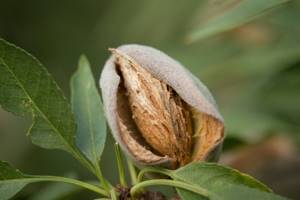
Taking into account the fact that it is recommended to consume 20-25 whole kernels per day, we can calculate that the average daily dose of almonds for an adult is 30 g. This norm is 182 kcal and contains:
- 6 g proteins;
- 5 g carbohydrates;
- 17 g fat;
- 4 g fiber;
- 1.5 g sugar.
Regular consumption of almond fruit reduces the levels of two biomarkers of oxidative processes. Taking 30 grams daily reduces the concentration of bad cholesterol (LDL) in the blood. Inhibits oxidative processes in the body's cells, which provoke aging. Acts as a fat burner.
Liquid products
Almost any dish is made using liquid. Knowing for sure how many grams are in a faceted glass of milk, kefir or other liquid, you can easily cope with even a complex recipe.
| Product | Weight in glass to rim (g) | Weight in glass to rim (g) |
| Water | 200 | 250 |
| Milk | 200 | 250 |
| Vinegar | 200 | 250 |
| Cream | 210 | 250 |
| Curdled milk | 200 | 250 |
| Ryazhenka | 200 | 250 |
| Kefir | 200 | 250 |
| Vegetable oil | 180 | 225 |
| Ghee butter | 185 | 240 |
| Melted margarine | 180 | 230 |
| Baked lard | 205 | 245 |
| Tomato sauce | 180 | 220 |
There are as many products such as vodka, wine, cognac in a glass as there is water. There is no need to measure them. If the product is more dense, the mass will change.
Interesting!
It is useful to have a table of food measurements in glasses, teaspoons and tablespoons in the kitchen. Housewives often print out such summaries and hang them on the wall so that important information is always in a visible place.
Peanut paste
Peanut butter is obtained from ground nuts, which are finely ground and mixed with salt and vegetable oil. This is a tasty and healthy product (subject to the recommended standards), a favorite delicacy of many Russians. Therefore, it will be useful for those who monitor their waist size to find out how many grams of the product and calories are in spoons:
- 1 tsp. – 12 gr. and 70 kcal;
- 1 tbsp. l. – 35 gr. and 205 kcal.

Viscous products
Viscous ingredients weigh more than bulk ingredients, since they contain a lot of liquid, pectin, and sometimes sugar. The weight of these products may be slightly or significantly greater, so do not neglect the measurement. After all, if, for example, you put less sour cream or tomato paste in a dish, the dish may not turn out well. Below is a table with the most common viscous products and their weight in a faceted glass.
| Product | Weight to rim (g) | Weight to top edge (g) |
| Sour cream | 220 | 250 |
| Tomato paste | 180 | 220 |
| Mayonnaise | 200 | 250 |
| Condensed milk | 250 | 300 |
| Boiled condensed milk | 280 | 350 |
| Liquid honey | 330 | 415 |
| Jam | 290 | 310 |
| Puree | 290 | 350 |
When calculating the mass of viscous ingredients in a glass, temperature plays a huge role. They are easier to pour when warm or even hot, so it is recommended to heat many products first and then measure their mass.
How many grams are in a teaspoon of food (table):
This table shows the weight of the ingredients in grams in an average-sized teaspoon - 13 cm.
| Product name | Without slide in grams | With a slide in grams |
| How many grams of water in a teaspoon | 6 | — |
| How many grams of sugar in a teaspoon | 7 | 9 |
| How many grams of coarse salt | 7 | 9 |
| How many grams of fine salt in a teaspoon | 8 | 10 |
| How many grams of flour in a teaspoon | 5 | 7 |
| How many grams of honey in a teaspoon | 10 | — |
| Whole milk | 6 | — |
| Powdered milk | 7 | 9 |
| Condensed milk | 12 | — |
| Cream | 5 | — |
| Cottage cheese | 11 | 13 |
| Sour cream | 11 | 14 |
| Vegetable oil | 7 | — |
| Liquid ghee | 6 | — |
| Butter | 7 | 9 |
| Linseed oil | 5 | — |
| Flax seeds | 4 | 6 |
| Tomato paste | 11 | 13 |
| Tea | 2 | 4 |
| Cocoa powder | 4 | 6 |
| Ground coffee | 5 | 7 |
| Rice | 7 | 9 |
| Buckwheat | 5 | 7 |
| Cereals | 3 | 5 |
| Cornflakes | 2 | 4 |
| Semolina | 6 | 8 |
| Pearl barley | 6 | 8 |
| Beans | 9 | 11 |
| Peas | 6 | 8 |
| Ground crackers | 5 | 7 |
| Dry yeast | 3 | 5 |
| Fresh yeast | 11 | — |
| Jam | 5 | — |
| Raisin | 5 | 7 |
| Ground nuts | 5 | 7 |
| Dried mushrooms | 2 | 4 |
| Vinegar 9% | 6 | — |
| Ground black pepper | 5 | 7 |
| Citric acid granules | 5 | 6 |
| Soda | 7 | 9 |
| Starch | 3 | 4 |
| Gelatin | 4 | 6 |
| Mayonnaise | 12 | 14 |
| Copper sulfate | 20 | 22 |
Delicious recipe! Sandwich with black caviar photo
